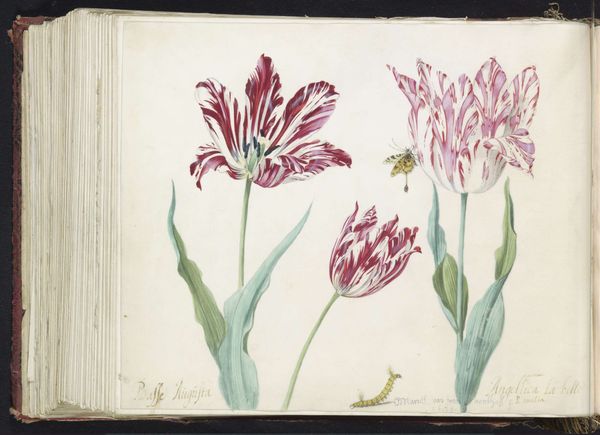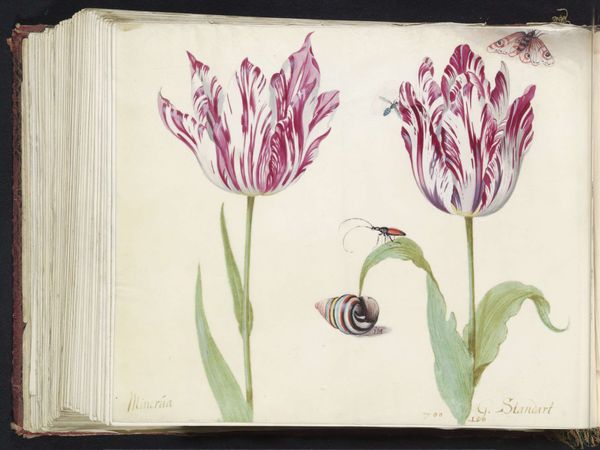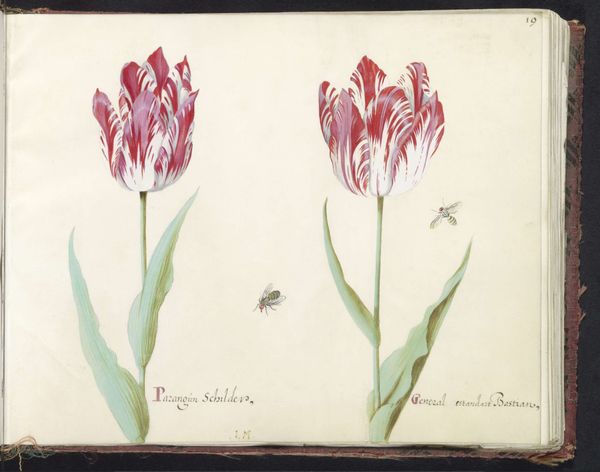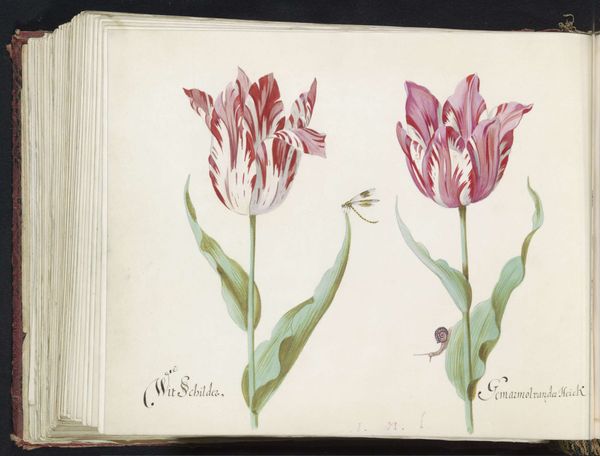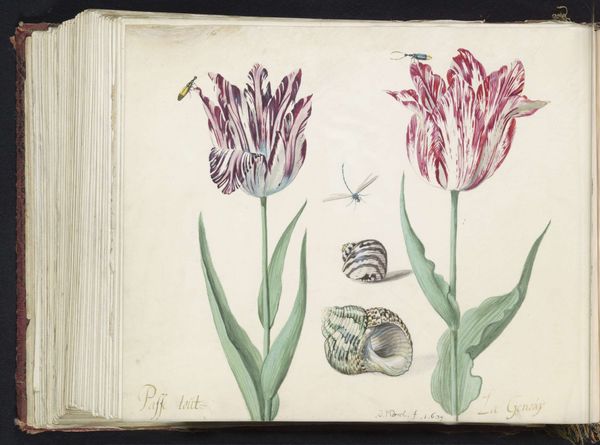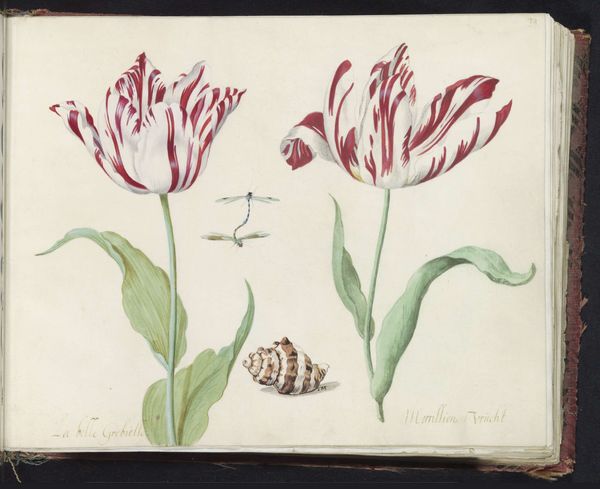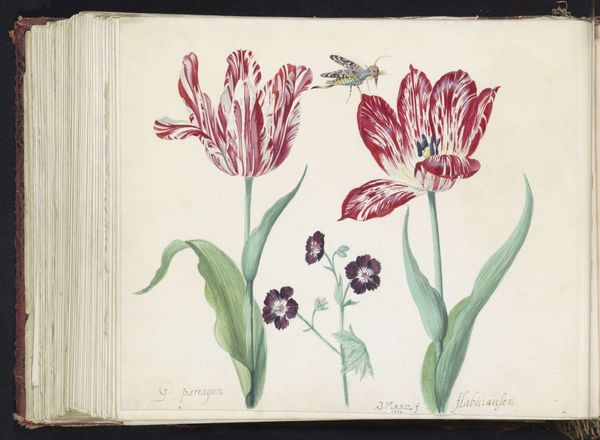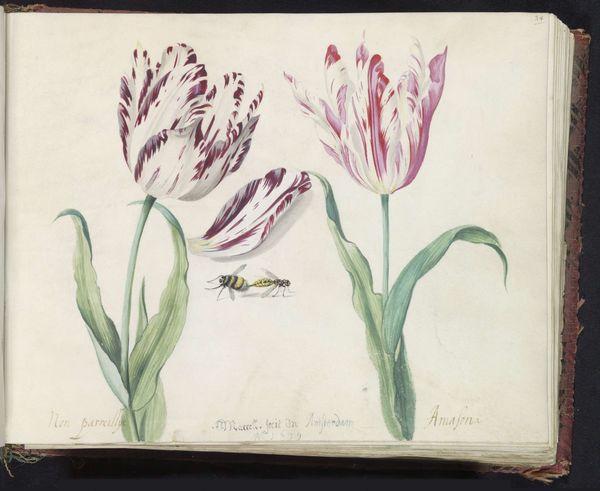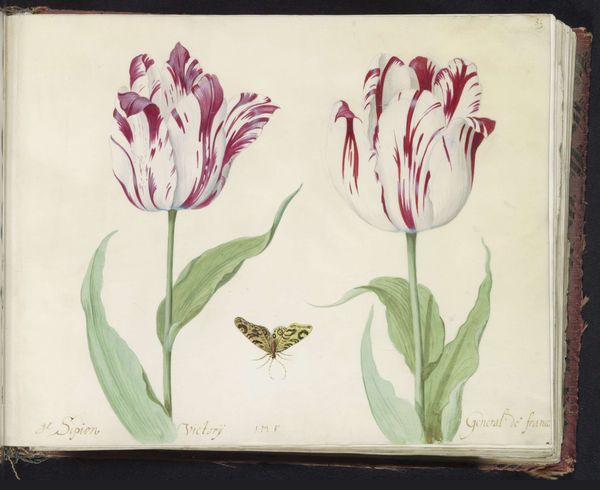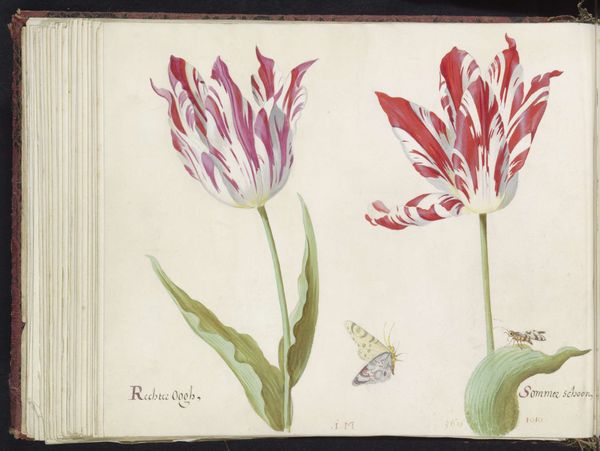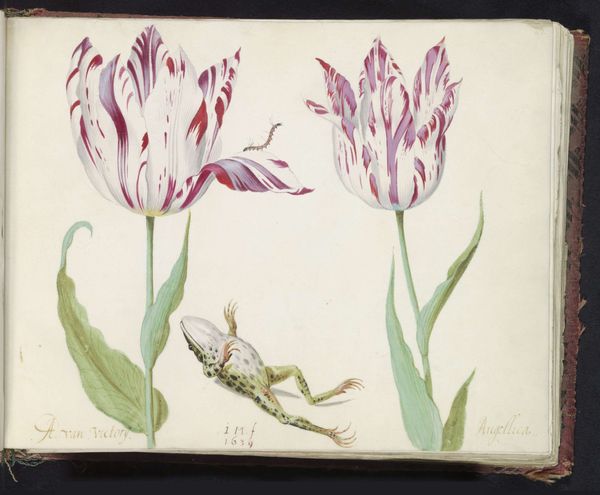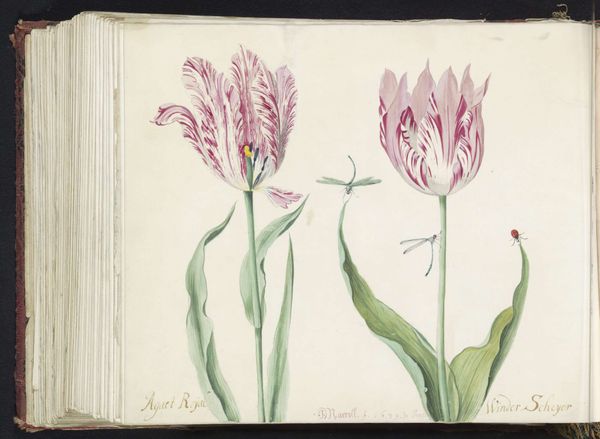
painting, watercolor
#
dutch-golden-age
#
painting
#
watercolor
#
watercolor
#
realism
Dimensions: height 265 mm, width 335 mm
Copyright: Rijks Museum: Open Domain
Editor: Here we have "Two Tulips with a Spider and a Fly in a Spiderweb," painted by Jacob Marrel in 1639, using watercolors. I'm immediately struck by the delicate realism and the inclusion of these insects amidst such beautiful blooms. What catches your eye about this work? Curator: I'm interested in the material value and labor embedded in this deceptively simple image. Watercolors were becoming more sophisticated in the 17th century, allowing for increasingly realistic depictions of luxury items. We're not just looking at tulips, but the *specific* 'broken' tulips coveted during Tulip Mania. Do you see how the artist meticulously renders each stripe? Editor: Yes, the detail is incredible! It feels like an attempt to capture and perhaps even possess these rare specimens. But how does the presence of the insects fit into that materialist perspective? Curator: Precisely. The spider and fly disrupt the pure aesthetic appreciation. They introduce the natural processes of consumption and decay, reminding us of the inherent instability of wealth. These tulips, already 'broken' with disease, are not only investments, but also biological objects subject to the whims of nature and market forces. We're invited to consider this work in its historical moment: who commissioned this, what did it cost to create, and what status did such work convey? Editor: So it's not just about beauty, but also about the social and economic context in which it was created and consumed? The materials, labor, and the speculative economy swirling around these very tulips! I’ll definitely remember that. Curator: Indeed. By focusing on the materiality and the production of the image, we unlock a deeper understanding of the social forces at play in Dutch Golden Age art.
Comments
No comments
Be the first to comment and join the conversation on the ultimate creative platform.
